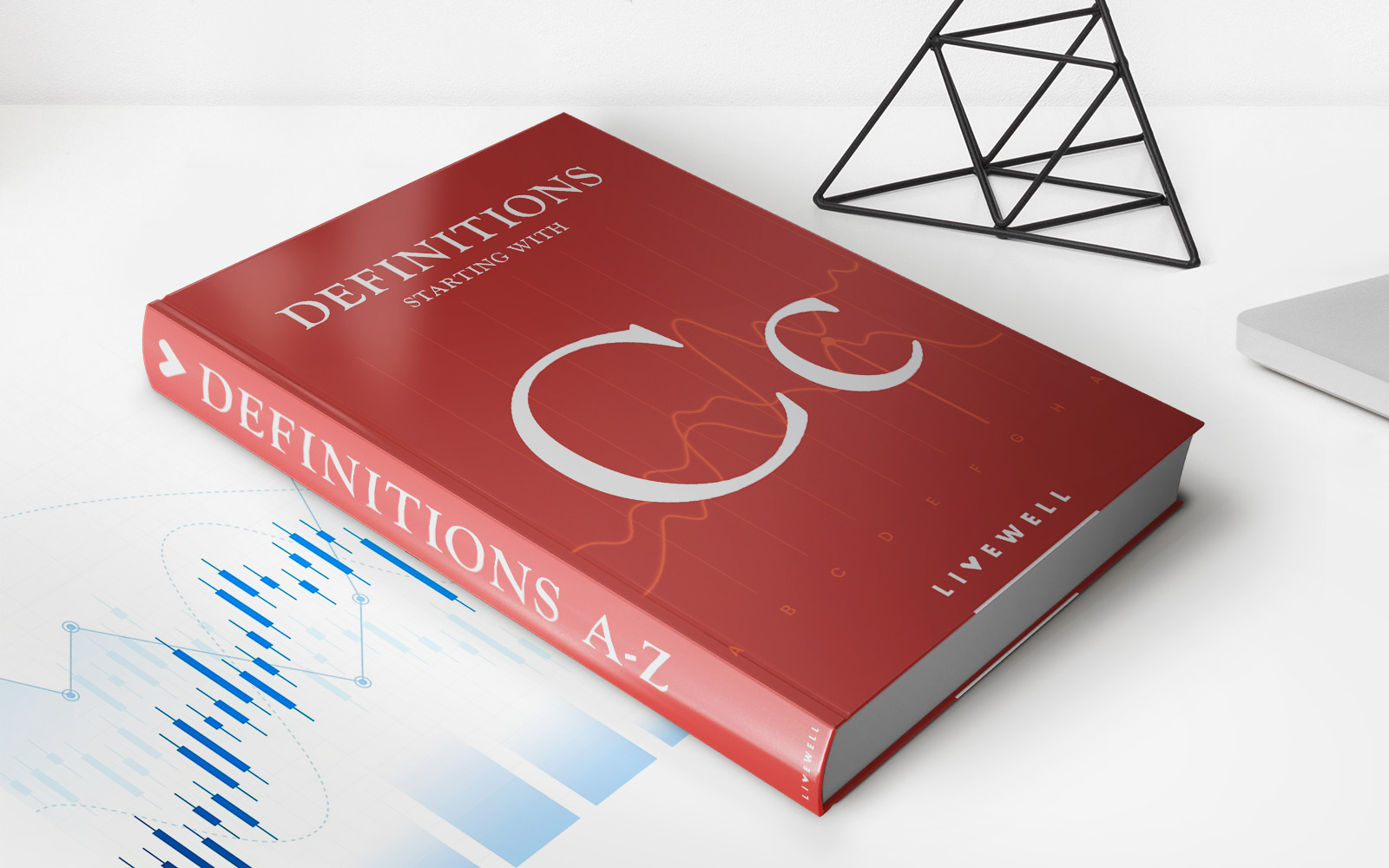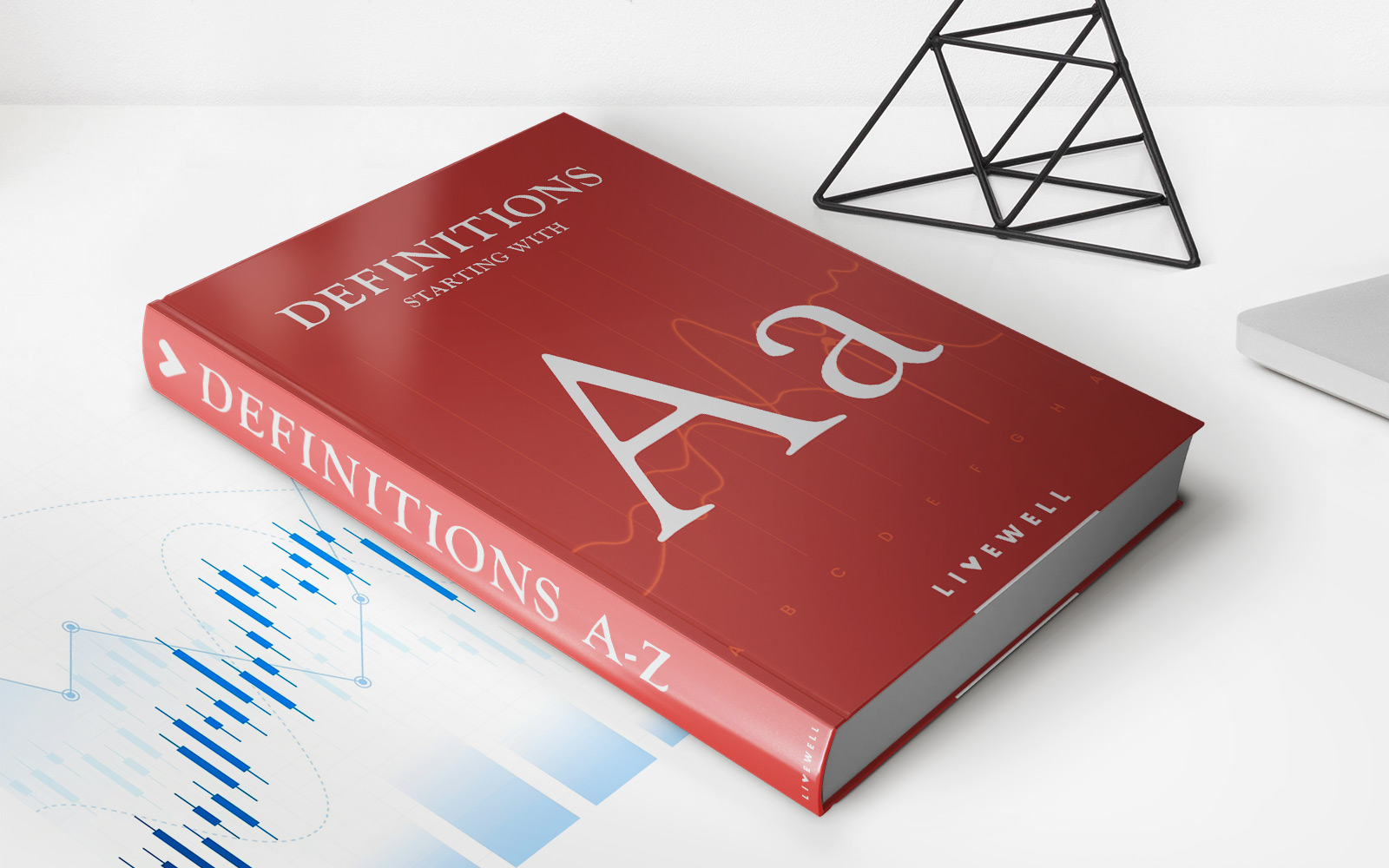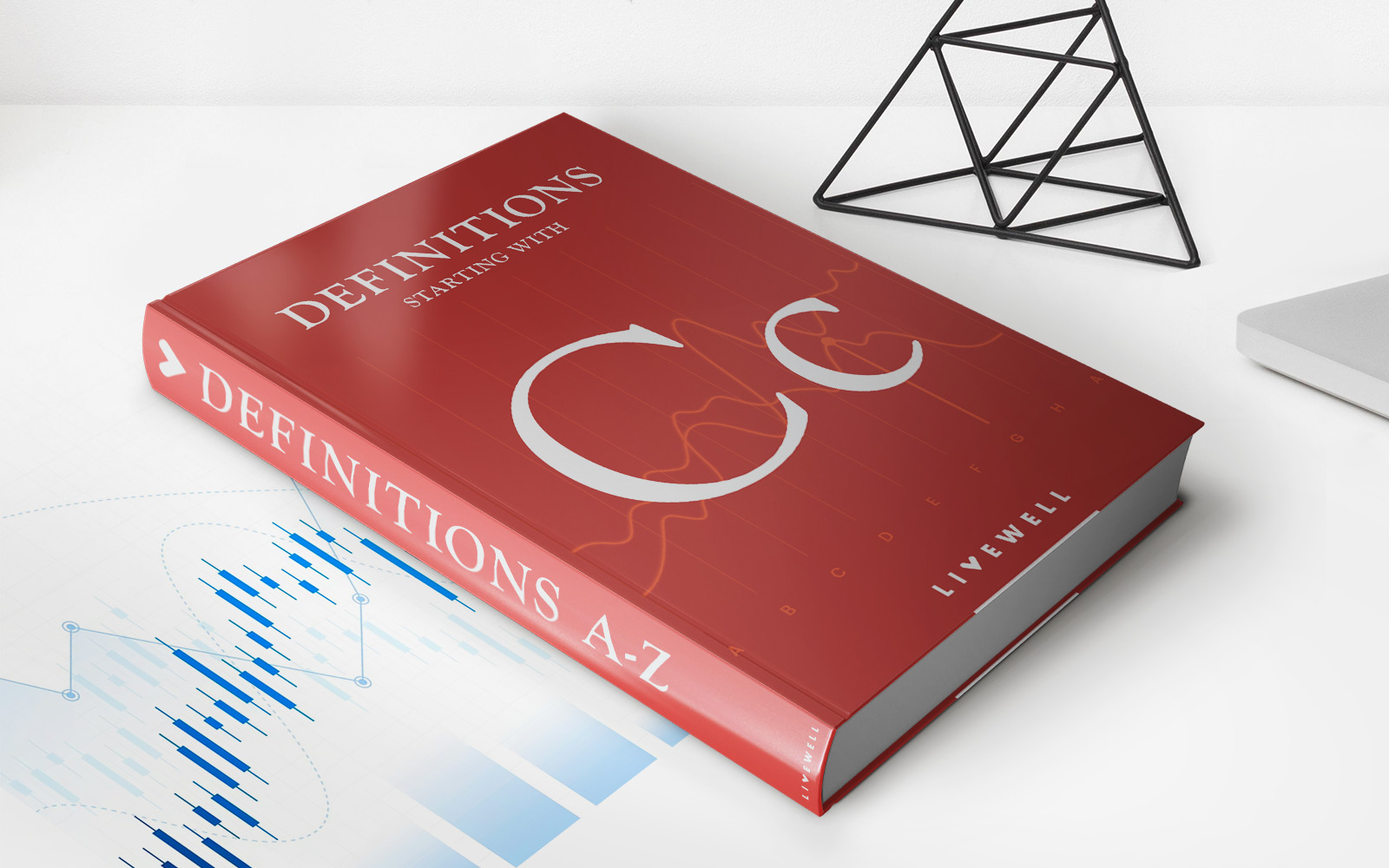

Finance
What Is Annual Renewable Term Insurance?
Published: November 10, 2023
Learn about annual renewable term insurance and how it can be a smart choice for your financial security. Explore the benefits and features of this type of insurance.
(Many of the links in this article redirect to a specific reviewed product. Your purchase of these products through affiliate links helps to generate commission for LiveWell, at no extra cost. Learn more)
Table of Contents
- Introduction
- Definition of Annual Renewable Term Insurance
- How Annual Renewable Term Insurance Works
- Benefits of Annual Renewable Term Insurance
- Drawbacks of Annual Renewable Term Insurance
- Comparison with Other Types of Life Insurance
- Factors to Consider Before Choosing Annual Renewable Term Insurance
- Conclusion
Introduction
Welcome to the world of insurance, where there is a wide array of options to protect yourself and your loved ones. Among the various types of life insurance policies available, one that often stands out is Annual Renewable Term Insurance. If you’re unfamiliar with this term, don’t worry – we’re here to break it down for you.
Annual Renewable Term Insurance, also known as ART insurance, is a form of temporary life insurance that provides coverage for a specific period, typically one year. Unlike other types of life insurance policies that offer coverage for a specified period, such as 10, 20, or 30 years, annual renewable term insurance is renewable on an annual basis.
So, what does this mean exactly? Essentially, it means that at the end of each policy year, you have the option to renew your coverage for another year, without having to undergo any medical exams or provide any additional proof of insurability. This flexibility is one of the key features that can make annual renewable term insurance an attractive option for those seeking temporary coverage.
Now that we’ve covered the basics, let’s take a closer look at how annual renewable term insurance works and the benefits it can offer.
Definition of Annual Renewable Term Insurance
Annual Renewable Term Insurance is a type of life insurance policy that provides coverage for a specified period, typically one year. Unlike permanent life insurance policies, such as whole life or universal life, annual renewable term insurance is temporary and does not accumulate cash value.
With annual renewable term insurance, the policyholder pays premiums on an annual basis, and the coverage lasts for one year. At the end of each policy year, the policyholder has the option to renew the policy for another year, typically at a higher premium rate based on their age at the time of renewal.
One of the defining features of annual renewable term insurance is its flexibility. Since the policy is renewed annually, the policyholder has the opportunity to reassess their insurance needs and make adjustments accordingly. For example, as life circumstances change and financial responsibilities evolve, the policyholder may choose to increase or decrease the coverage amount.
It’s important to note that while annual renewable term insurance provides coverage for a specified period, it does not guarantee coverage for the entire lifespan of the insured. As the insured individual ages, the premiums for annual renewable term insurance tend to increase. This is because the risk of insuring older individuals becomes higher, and the insurance company adjusts the premiums accordingly.
In summary, annual renewable term insurance offers temporary coverage for a specific period, typically one year, with the option to renew the policy annually. The policyholder pays premiums on an annual basis, and the coverage can be adjusted to meet changing needs over time.
How Annual Renewable Term Insurance Works
Understanding how annual renewable term insurance works is essential in determining if it is the right choice for your insurance needs. Here’s a breakdown of the key aspects of this type of policy:
Premiums: With annual renewable term insurance, the policyholder pays premiums on an annual basis. These premiums are based on factors such as the age, health, and gender of the insured individual. Generally, the premiums for annual renewable term insurance are lower compared to permanent life insurance policies, making it an affordable option for temporary coverage.
Coverage Period: As the name suggests, annual renewable term insurance provides coverage for one year at a time. At the end of each policy year, the policyholder has the option to renew the policy for another year. The coverage amount remains the same unless adjustments are made by the policyholder.
Renewal: One advantage of annual renewable term insurance is the ease of renewal. Unlike some other types of life insurance policies, there is no need for medical exams or providing additional proof of insurability when renewing the policy. However, it’s important to note that the premium rate for the renewed policy will typically increase based on the insured individual’s age at the time of renewal.
Adjustable Coverage: Annual renewable term insurance offers the flexibility to adjust the coverage amount as your insurance needs change. For example, if you initially purchase a policy with a coverage amount of $500,000 and later decide you need more or less coverage, you can make adjustments when renewing the policy.
Conversion Options: In some cases, annual renewable term insurance policies may offer conversion options. This means that at any point during the policy term, the policyholder has the ability to convert the policy into a permanent life insurance policy, such as whole life insurance or universal life insurance, without the need for a new medical exam or proof of insurability. The terms and conditions of conversion options can vary between insurance providers and policies, so it’s important to review the policy details.
Overall, annual renewable term insurance provides temporary coverage for one year at a time, with the option to renew the policy annually. It offers flexibility in terms of adjusting coverage amounts and may provide conversion options to permanent policies. Understanding how this type of policy works can help you make an informed decision when considering your insurance needs.
Benefits of Annual Renewable Term Insurance
Annual Renewable Term Insurance offers several benefits that make it an appealing option for many individuals. Let’s explore some of the key advantages:
1. Flexible Coverage: With annual renewable term insurance, you have the flexibility to adjust your coverage amount each year. This means that as your financial needs change, such as paying off a mortgage or sending children off to college, you can increase or decrease your coverage accordingly, ensuring that you have the right amount of protection at any given time.
2. Affordable Premiums: Compared to other types of life insurance policies such as whole life or universal life insurance, annual renewable term insurance typically comes with lower premiums. This can be especially beneficial for individuals who may have a limited budget but still want to ensure they have some level of coverage.
3. No Medical Exams for Renewal: One of the notable advantages of annual renewable term insurance is that there is no requirement for medical exams or providing additional proof of insurability when renewing the policy. This can save you time, money, and potential stress as you can easily continue your coverage without the need for further medical evaluations.
4. Convertibility Options: Many annual renewable term insurance policies offer conversion options, which allow you to convert the policy into a permanent life insurance policy without the need for a new medical exam or proof of insurability. This can be beneficial if you decide you need long-term coverage or if your insurance needs change over time.
5. Short-Term Coverage Needs: Annual renewable term insurance is well-suited for individuals who have short-term coverage needs. For example, if you are looking for coverage to protect your family while you have a mortgage or until your children are financially independent, this type of policy can provide the necessary protection for that specific timeframe.
6. Peace of Mind: Having any form of life insurance offers peace of mind, knowing that you have taken steps to protect your loved ones in case the unexpected happens. Annual renewable term insurance allows you to review and adjust your coverage annually, ensuring that you have the right amount of coverage for your changing circumstances.
While annual renewable term insurance may not be suitable for everyone, its flexibility, affordability, and ability to meet short-term coverage needs make it an attractive option for many individuals. It’s always recommended to evaluate your specific financial situation, long-term goals, and insurance needs before making a decision.
Drawbacks of Annual Renewable Term Insurance
While there are several benefits to annual renewable term insurance, it’s important to consider the drawbacks as well. Here are some potential disadvantages to keep in mind:
1. Increasing Premiums: One of the primary drawbacks of annual renewable term insurance is that the premiums tend to increase as you age. Since the policy is renewable annually, the premium rates are typically based on your age at the time of renewal. This means that the cost of coverage will gradually increase over the years, potentially making it less affordable in the long run.
2. Lack of Cash Value: Unlike permanent life insurance policies, annual renewable term insurance does not accumulate cash value over time. This means that if you keep paying premiums but never utilize the policy, there is no savings component or cash value that you can access or borrow against.
3. Limited Coverage Period: Another drawback of annual renewable term insurance is the limited coverage period. While the policy can be renewed annually, the coverage is only guaranteed for one year at a time. This can be a disadvantage if you have the need for long-term coverage or if you anticipate a need for coverage beyond the renewal period.
4. Potential for Coverage Gap: If you decide not to renew your annual renewable term insurance policy or if you become uninsurable in the future, there is a risk of being left without coverage. This can leave you and your loved ones financially vulnerable if something unexpected were to happen.
5. Not an Investment: Annual renewable term insurance is designed to provide pure insurance coverage and does not serve as an investment vehicle. This means that the premiums you pay solely go towards the cost of insurance and do not generate any returns or build cash value over time.
6. Possible Underwriting Challenges: While renewal of annual renewable term insurance is typically guaranteed without the need for a new medical exam, it’s important to note that there may still be underwriting challenges if your health condition deteriorates over time. Renewal is generally based on the assumption of no significant changes in your health status.
Considering these drawbacks, it’s crucial to carefully evaluate your insurance needs, future financial goals, and budget before selecting an annual renewable term insurance policy. For individuals who require long-term coverage or prefer a policy with a cash value component, alternative options such as permanent life insurance may be more suitable.
Comparison with Other Types of Life Insurance
When exploring life insurance options, it’s helpful to understand how annual renewable term insurance compares to other types of life insurance policies. Here’s a comparison of annual renewable term insurance with two commonly known alternatives: whole life insurance and universal life insurance.
1. Annual Renewable Term Insurance vs. Whole Life Insurance:
- Duration: Annual renewable term insurance provides coverage for a specific period, usually one year, and can be renewed annually. Whole life insurance, on the other hand, offers coverage for the entire lifespan of the insured.
- Premiums: Annual renewable term insurance typically has lower premiums compared to whole life insurance since it offers temporary coverage without the accumulation of cash value.
- Cash Value: Whole life insurance policies have a cash value component that accumulates over time. This allows policyholders to borrow against the cash value or withdraw funds but often comes with higher premiums.
- Flexibility: Annual renewable term insurance offers more flexibility in adjusting coverage amounts as needs change. Whole life insurance is less flexible, and any changes to coverage often require additional underwriting.
- Investment Component: Whole life insurance includes an investment component that has the potential to grow over time. This investment component can earn dividends or interest, providing a potential source of cash value growth.
2. Annual Renewable Term Insurance vs. Universal Life Insurance:
- Duration: Annual renewable term insurance is a short-term coverage option that is renewable annually. Universal life insurance, on the other hand, offers coverage for the entire lifespan of the insured.
- Premiums: The premiums for annual renewable term insurance are generally lower compared to universal life insurance.
- Flexibility: Annual renewable term insurance provides more flexibility to adjust coverage amounts, while universal life insurance offers more flexibility in terms of premium payments and potential cash value growth.
- Cash Value: Universal life insurance policies have a cash value component that accumulates over time and offers potential growth. The policyholder can access the cash value through loans or withdrawals, subject to any applicable terms and conditions.
- Investment Component: Universal life insurance policies offer investment options within the policy, allowing policyholders to allocate premiums towards investment accounts. These investment accounts have the potential for growth over time.
When comparing annual renewable term insurance with whole life insurance and universal life insurance, it’s important to consider factors such as premium affordability, coverage duration, cash value accumulation, and flexibility to determine which type of policy aligns best with your financial goals and insurance needs.
Factors to Consider Before Choosing Annual Renewable Term Insurance
Selecting the right life insurance policy requires careful consideration of your individual needs and circumstances. Here are some important factors to keep in mind before choosing annual renewable term insurance:
1. Coverage Duration: Consider how long you need coverage. Annual renewable term insurance provides coverage for one year at a time, but if you require coverage for a longer period, other types of life insurance, such as whole life or universal life, may be more suitable.
2. Financial Situation: Evaluate your current financial situation, including your income, expenses, and liabilities. Annual renewable term insurance can be a cost-effective option in the short term, especially if you have a limited budget. However, if you have significant financial obligations that require long-term coverage, an alternative policy with a longer duration may be more appropriate.
3. Health and Age: Assess your health and age. With annual renewable term insurance, premiums are generally based on the insured individual’s age, and they tend to increase with each renewal. If you anticipate changes in your health or if you are older, the increasing premiums over time may make other types of life insurance policies more financially viable.
4. Flexibility Needs: Consider whether you need flexibility in adjusting your coverage amount. An advantage of annual renewable term insurance is the ability to modify the coverage to adapt to changing circumstances. If your coverage needs are likely to change frequently, this type of policy could be a good fit.
5. Cash Value Accumulation: Think about whether cash value accumulation is important to you. Annual renewable term insurance does not have a cash value component, which means it does not accrue savings or investment benefits. If you are looking for an insurance policy that grows in cash value over time, you may need to explore alternatives such as whole life or universal life insurance.
6. Long-Term Goals: Consider your long-term financial goals. If you have specific financial objectives, such as leaving a legacy or estate planning, other types of life insurance policies may be better suited to meet these goals. Annual renewable term insurance is primarily focused on providing temporary coverage for a specific period.
7. Conversion Options: Evaluate the conversion options available with the annual renewable term insurance policy. Some insurers offer the ability to convert annual renewable term insurance policies into permanent life insurance policies without the need for additional underwriting or a medical exam. Understanding these conversion options can be beneficial if you anticipate the need for long-term coverage in the future.
By considering these important factors, you can make an informed decision about whether annual renewable term insurance aligns with your insurance needs, budget, and long-term financial goals. It’s recommended to consult with a qualified insurance professional who can provide personalized guidance based on your specific circumstances.
Conclusion
Annual renewable term insurance can be a suitable option for individuals looking for temporary coverage that offers flexibility and affordability. It provides coverage for one year at a time, with the ability to renew the policy annually without the need for medical exams or proof of insurability. This short-term nature of the coverage can make it particularly appealing for those with changing financial needs and obligations.
While annual renewable term insurance offers advantages such as adjustable coverage amounts, affordable premiums, and peace of mind, it’s important to consider its drawbacks as well. The premiums increase with each renewal, and there is no cash value accumulation. Additionally, coverage is limited to the policy duration, and there is a potential for a coverage gap if the policy is not renewed or the insured becomes uninsurable.
Comparing annual renewable term insurance with other types of life insurance, such as whole life or universal life, is essential to determine which policy aligns best with your specific needs and goals. Factors such as affordability, coverage duration, cash value accumulation, and flexibility should be carefully evaluated before making a decision.
Ultimately, the choice of whether to opt for annual renewable term insurance will depend on your unique financial situation, coverage needs, and long-term goals. It’s crucial to weigh the benefits and drawbacks, consider your financial objectives, and consult with a knowledgeable insurance professional to make an informed decision about your life insurance coverage.
Life insurance is a critical financial tool that provides a safety net for your loved ones in the event of your passing. Whether you choose annual renewable term insurance or another type of policy, taking steps to secure your family’s financial future is an essential aspect of comprehensive financial planning.














